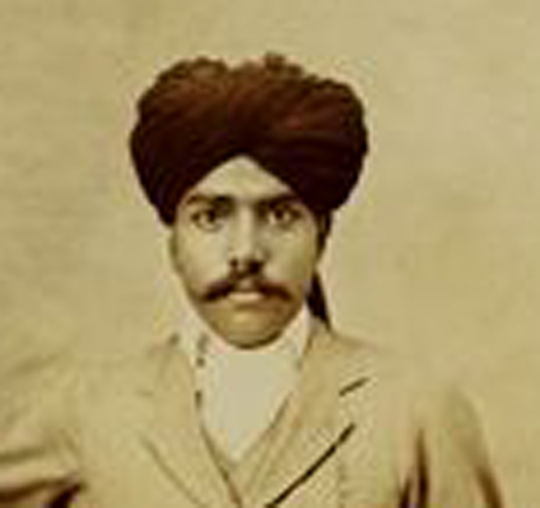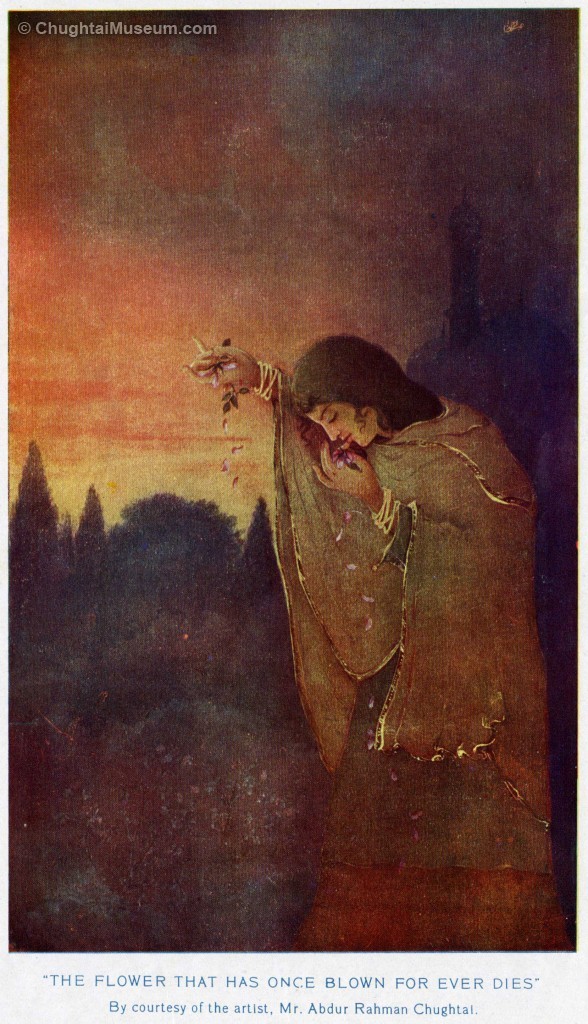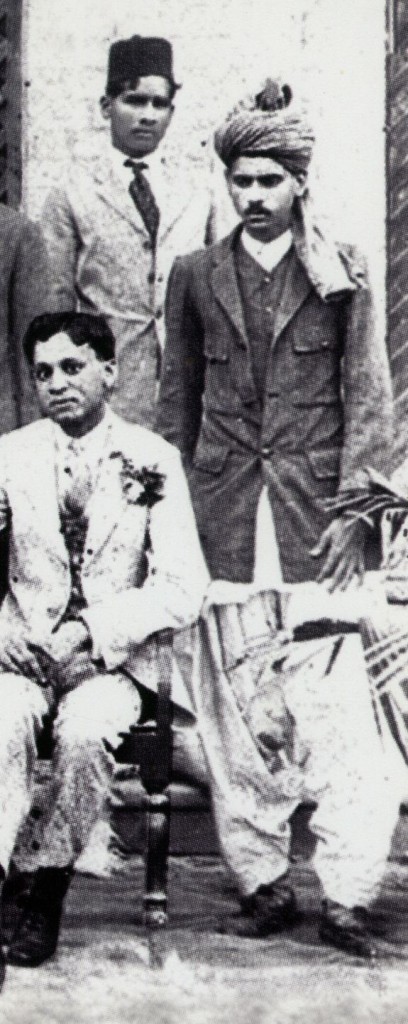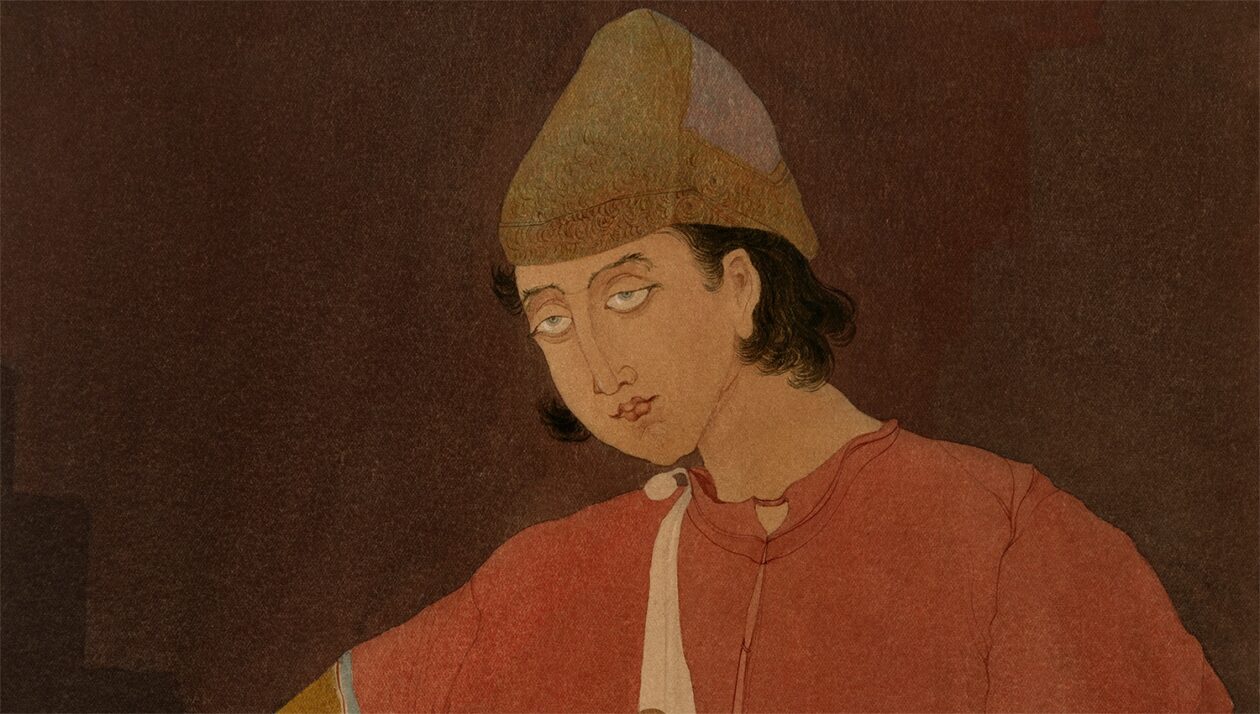THE AESTHETIC IMPULSE
THE CHILD M.A. RAHMAN CHUGHTAI
Things hardly known by anyone

The first marriage of Mian Kareem Baksh Mimar was within the family. The wife begot him a son, and he named him Muhammed Hussain. The father even with his meager circumstances gave the best education possible to his son, who was a graduate of those times. Then his wife died, and father and son were left alone. Mian Kareem Baksh married for the second time, Chiragh Bibi, and Chiragh Bibi gave him three sons, Abdur Rahman, Abdullah and Abdur Raheem.

The Quranist view of life was there in Chinay Wali Masjid, near Mohalla Chabuk Sawaran and there Abdur Rahman received his Quranic education.This was before the mosque was captured by the Al Hadees group in Lahore. There Abdur Rahman started the lessons to HIFAZ the Quran that his internal desire to become Hafiz ul Quran, just like his elder half-brother Muhamed Hussain. Soon after Baba Miran Baksh volunteered to Mian Kareem Baksh to start teaching naqashi to the three boys and all three enrolled in the Masjid Wazeer Khan hujra class of the Baba. Baba Miran Baksh was married to the sister of Kareem Baksh, that is Karam Nisa and they lived in Kocha Buzurg Shah. For few years these lessons were the first lessons that Abdur Rahman Chughtai learnt in the traditon of aesthetics. Later the brother of Chiragh Bibi, the Mama (uncle) Elahi Baksh enrolled him in the Railway Technical School, near Railway Station, which was in fact the site of the mosque of Qudsia Begum, wife of Prince Dara Shikoh. Creative impulse would not go away.

One day Abdur Rahman was working on his home work for school, that a Crow came and sat on the minaret of the Mullah Ghaus mosque opposite their home. The crow intrigued Abdur Rahman as a subject and on a paper he drew a crow on the minaret of a mosque, and later had the courage to show his drawing to his father. Mian Kareem Baksh was a busy worker, and was absent from the house from Morning till late night. The boys used to play but as soon as the wooden kaaparas (shoes) of the father would sound in the galli, all three would jump n the bed. Mian Kareem Baksh had brought a Muhajir couple from Kashmeer, Ama Tabbi and her husband to the house to give them shelter. It was Ama Tabbi who was more of a mother and father to the kids. One day Abdur Rahman had caught a baitara (bird) on the roof and put it in the kameez of his father. When the father came home to put it on, he was shocked to see the Kameez jumping up and down. Abdur Rahman was obviously caught and reprimanded but things were smooth. In one incident a hundred rupee note got misplaced and the boys were blamed for putting it somewhere. It was later found by chance that a mouse had taken the note to his hole in the wall and it was discovered there, much to the relief of all, for 100 Rs at that time was in all terms a great sum for the family.The past times were enormous, as when there was nothing to do,the brothers with horde of girls and boy cousins, would go over on the roof in the Havelli of their Mama Elahi Baksh and used to bath in the rain and frolic with each other. There was no gender consciousness and at that time, the girl cousins used to jump in the rain, after removing their shirts. A proper romp, naughty but never amorous.

A physically active child, Abdur Rahman Chughtai was fond of swimming in the river Ravi, in the canal Degh, visiting Mughal monuments, hunting, fishing, flying kites on his roof top, and even just playing cricket, outside the mosque of Maryiam Zamani, wife of Emperor Jahangeer. Picnics were often held at Jahangeer’s mausoleum. But these physical activities, never impaired his aesthetic impulse.
Abdur Rahman himself recalls that on his way back from School, he used to see a painter paint in the Gumti Bazaar and used to stop and watch the man paint at his shop. The Gumti Bazaar painters were a famous painting family which had migrated from Kabul a long time back and were called Moortian walay. A section was called Bindari-ghar, and the artist’s first wife was from that section of the family.

The first aesthetic impulse for the child was that when the mother made him wear a RED JORA to attend a marriage and MARC refused to go out in that jora. He rejected its bold colour, as well as style. He thought it unsuitable for wearing. He was scolded, reprimanded but went on crying and would not budge an inch. So they left him on the stairs crying. When the parents came back from marriage, he was still on the steps, where he had cried for hours, just at the thought of an inappropriate dress for him. His aesthetics were showing their colour.
The death of his father in 1913 made the brothers do many things. One was the opening of a FIREWOOD SHOP in their owned shop inside Yakki Gate Lahore. The two brothers used to sell firewood while Abdur Rahman seated on a charpai at the back of shop used to write dramas, imaging himself to be a great playwright for dramas one of these days. Photography and photo-litho work became his obsession. And he used to paint them with his AEROGRAPH pen giving a coloured work to his clients for his bread earning.

At the Mayo School of Arts, he saw a show of National Paintings at Lahore Museum and felt the inadequacy of the works. He thought he could make better works than that. That led to a spurt of making paintings. The first work was NUR JAHAN MOURNING AT JAHANGEERS TOMB, which he tore after exhibiting in his Mohalla home to friends. Later on some paintings were made while he was in Gujranwalla and sent for publication in Modern Review Calcutta, courtesy of Chatterjee Sahib, the Principal of the Govt Mission School Gujranwalla. And orginally he found fame at the first show of his at Lahore Museum in 1920.
The question always remain. What made him stand outside the common environment? Was it genetic? Was it environmental? Was it a combination of both. Here in Lahore, it is simply said that it was a GIFT OF ALLAH.

See Chughtai as never seen before